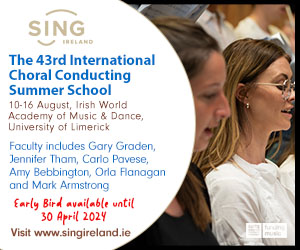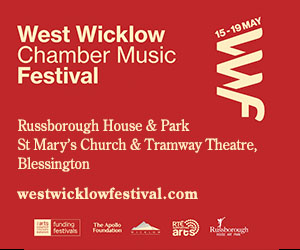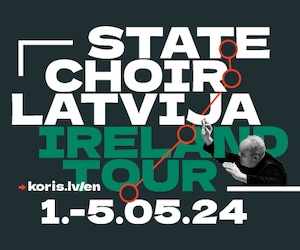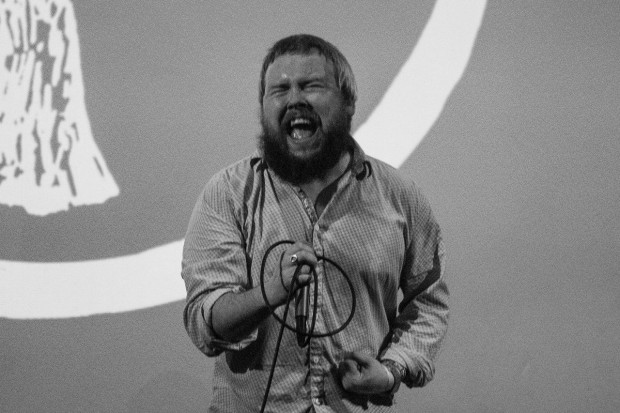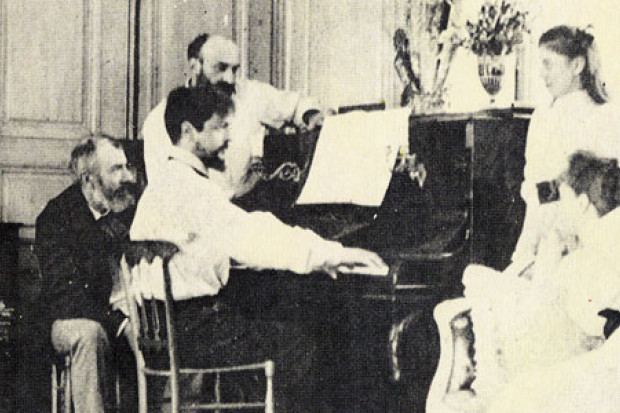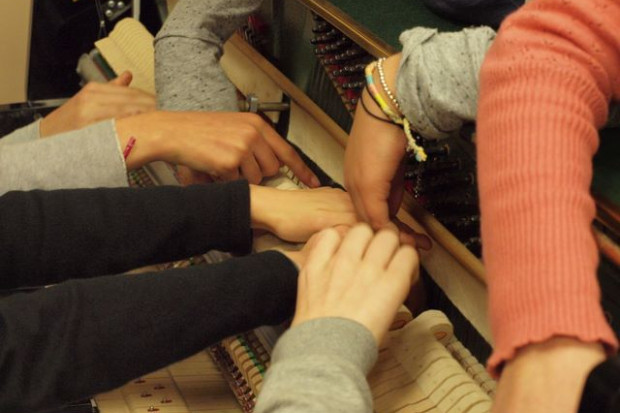Live Reviews: Composers' Choice – Whispering Gallery
NCH, 14th April 2003
Elaine Clarke (vn), Malachy Robinson (db), Roy Holmes (pf), Ruth Hickey (b.cl), Kate Ellis (vc), and the Elysium Trio
Jürgen Simpson – Piano Piece I
Simon O’Connor – Dedicated to Death
Donnacha Costello – r.i.3.1
Paul Smyth – For Elaine Rediscovered
Roy Carroll – Structural Damage
Judith Ring – Fusion
Brian Bolger – Arriviste
On this occasion the Composers’ Choice Series broke from its concept (of one central composer selecting a programme to reflect their interests) to produce instead the choices of a composer collective: Whispering Gallery.
In a pre-concert talk we learned that Whispering Gallery is not exactly made up of the composers represented in this concert: some members were not represented here, and three or four of the seven in this selection are not in Whispering Gallery. Therefore Whispering Gallery has ‘curated’ as an individual would, choosing others. So although this concert was made up of seven world premieres from a group of Irish composers of similar ages, the concert was surprising for its extreme diversity of aesthetics and styles.
The selection ranged over purely improvised music, electronic/techno, and straight(er) ‘concert music’. (Incidentally, finding genre labels that mean the same thing to every reader, even finding a label for what used to be called contemporary music, is becoming impossible these days.)
Jürgen Simpson’s Piano Piece I was consistent and extremely well-crafted. The general language was atonal complexity, but with more tonal sonorities half-hidden within; these opposing forces were knitted together very convincingly. The overall effect was poetic.
Simon O’Connor’s piece seemed to come from the territory of artistic rejection and reinterpretation of where music should be, perhaps positing a revision of music history. His compositional choices were iconoclastic (in something approaching the original puritanical sense). So we had an opening that stretched a single two-note chord out for about four minutes, followed by seven very similar, lengthy sections (with slight, asymmetric variations), that referred us to Machaut’s Messe de Notre Dame. These were of interest for about half of the first such section. The last section mirrored and inverted the first. The tape provided a two-note chord of sine tones. This arid music evoked a cult-like level of ritual.
With Donnacha Costello the workings of his aesthetic position were previewed in the piece itself, where the tape part began with a sound-clip of Carl André explaining his approach to sculpture using scrap. The ideas put forward could then be heard to have a bearing on the music that followed. This piece belongs in a genre that is usually recording-based, rather than live, and boldly combines avant-garde soundscapes and funky rhythms, in two adjacent sections. It was ruthlessly limited in materials: one pitch through various octaves, the tape part using only sine tones and white noise(!), the clarinet having just four notes (again from one pitch). While not doubting this composer’s sincerity, or indeed ability, the effect of such heart-on-sleeve asceticism without offering much of an alternative vision was to my ears mainly pretentious.
Paul Smyth’s improvised solo provided refreshment from the harmonic aridity that went before: plenty of rich sonority and colour. The busy parts recalled the harmony of Scriabin’s later sonatas, while more restful sections recalled Keith Jarrett. That made for a certain incoherence in the music, although these areas were bridged expertly.
Roy Carroll is a composer with a clear vision, an explorer in the floating world of prime-generated polyrhythms. It was unfortunate that this piece returned us to the state of having one pitch for a very long time, a state that had regretfully come to dominate the programme in the first half. But in another programme this would not have had the same effect, as the individual strands of rhythm were guided in such a way as to provide coherence and interest. A gradual move into a multiplicity of pitches produced a sense of propulsion that sounded like a possible lead-in to a second movement. The pitch-free tape part made a very effective gestural counterpoint with the instruments, while being a little ironic.
Judith Ring’s Fusion had, in this presentation, a little too much prominence of the tape part, leaving the bass solo a bit obscured. That did not prevent the piece making its point well. It seemed to evoke the world of contemporary Dutch music or of, say, Christopher Fox. An ability to keep one texture gripping for a long time showed a sure voice is emerging here, a caveat being that the emotional impact relied a lot on direct anxiety-mood-painting from the tape.
Brian Bolger’s trio also had an effective way of playing with our expectations. It started in a well written, almost ‘holy minimalist’ voice, that was juxtaposed with an aggressive section where isometric repeating fragments rubbed against one another until they fell into rhythmic unison. Things got stuck there for a while, then a final gesture of escape closed the piece nicely. While this piece plays partly with borrowed language, I will be keen to hear where he goes in the future.
On the positive side this concert showed a raft of young composers striving for new ways, and beginning that search as has always been done: by rejection of assumptions or of conservatoire axioms. But after removing nearly all the composer’s usual tools, it is necessary to work what is left a lot harder. Gerald Barry showed how this can certainly be done, in the previous concert. Let’s just say if you move to the desert be serious about it, don’t pretend there’s still a handy supermarket down the road.
Published on 1 May 2003
John McLachlan is a composer and member of Aosdána. www.johnmclachlan.org






